Folders |
Fans Of The Penn Relays Say It's More Than A Track MeetPublished by
'Once You Come To Penn, It’s In Your Blood'Story by Cole Pressler/Images by Elijah A'gurs Attendance at the three-day Penn Relays Carnival is beyond that of a Super Bowl. Each year, more than a hundred thousand fans stream into the meet , watching every age race — from elementary school students to 90-year-old sprinters. New York City might have the cozy confines of The Armory, but the University of Pennsylvania’s Franklin Field is a fortress that seats more than 50,000. And it’s loud. Louder than Hayward, louder than the Coliseum. Bells, whistles, noise-makers, stomping, screaming. A good 4x400 relay race can split your eardrums. From New England to Jamaica, these fans show up to play a small part in the pandemonium that’s captivated Philadelphia for 127 years.
Joe Burno, 69, has been racing at the Penn Relays since high school in 1972. Now he runs Masters races, usually the 4x400. The chaos of the meet, and thoughts of his glory days racing for Brown University, bring him back to Penn year after year. “Lot of crazy memories up here,” Burno said. Burno has made his way through the age groups over the years, from the 40-year-old group all the way up to the 60-and-up category. At 53, he won a USATF title in the Masters 800. After he races, he stays to watch the rest of the meet, rain or shine, with his wife, Del, who he met at Brown University. “I remember before I graduated, coming to the Relays to watch him,” Del said. They used to bring their children to the meet decades ago — back then, unauthorized vendors sold clothes outside the stadium. “It was more like a marketplace,” Del said. “You could buy memorabilia, bootleg t-shirts, all kinds of things.” Joe added: “You can’t get away with that much anymore.” Even though the Relays have become more commercialized over the years, they still love its chaos. “It’s still the same spectacle,” Joe said. “A lot harder to get good seats, now, that’s for sure.”
John Corcoran, 59, grew up in Philadelphia and has been coming to the Relays for 40 years. “Forty times, at least,” he said. He remembers racing here as a middle schooler in 1976. “I’ve been to a lot of track meets that are a train wreck,” he said, chuckling. “This one’s always on time.” Now he comes to watch his son, Evan, who ran in the college 4x100 for Rowan University. He stood by himself on the stadium’s upper deck, looking directly below at the thousands of athletes, officials and fans mingling together. “I get to watch the whole backstretch. From up high, I can see everything.” Corcoran prefers the solitude of the upper deck. “I can just watch what I want to watch. I don’t have to talk to anybody, entertain anybody,” he said in his tough Philadelphia accent. He looked back to the track and resumed watching silently. “I took off of work just so I could come.” He comes for the spectacle, but also for the emotion of the relays. That’s what Penn is all about — there are only nine individual events, but what feels like a thousand different relay races. And relays bring out the feelings. “There’s those times when you see a real good team, they drop the baton and you just look at them.” Corcoran softened. “Aw, to God, you feel so bad for ‘em.” But a perfectly executed baton exchange is a thing of beauty. “It’s like art to me,” he said.
“We can’t turn away a Friday off of work,” Santo said, grinning at his friends. They looked like the type to smuggle beers into the meet in their coats — your average Philly 20-somethings. Jackson, a former sprinter, grumbled about how many missed baton handoffs he saw at the meet, which annoyed him. Handoffs and baton exchanges are supposed to be drilled into you when you start racing relays, he explained. Fisher listened to Jackson and nodded along. This was the first track meet he’s ever been to. He might not know a lot about handoffs, or the sport itself, but the event made sense to him.
Santo agreed. “There’s this aura when you walk in here,” he said. Santo ran track and cross country in high school but has slowed down in his 20s. “It’s fascinating to see how fast some of these guys are. These times are just different.” The Relays are especially emotional for Brother Lamar Williams, a youth minister from New Jersey. He first came to the meet in the mid-1980s and hasn’t missed one since — for him, it’s been a “super blessing.” “The last weekend of April, that’s the weekend when people from all over the world come to Philadelphia,” Williams said. “For a lot of kids running, it’s like their Olympics. The Penn Relays is the biggest meet they ever gonna run in.” He stopped for about 15 seconds and prayed silently, his head bowed: “You really feel the love here. Amen.” He comes to the meet to try and inspire the youth and high school athletes, who he says also inspire him.
Of course, the story of the Penn Relays is incomplete without the Jamaicans. Outside the stadium, motorcoaches drop off entire cohorts of 40-, 50- and 60-year olds sporting electric green, yellow and black — the colors of the island nation's flag. There might not be another group of running fans in America that are as loud, proud, clamoring and uplifting as Jamaican fans at Penn. Elvis James, who has attended the meet since the 1980s, says the fans aren’t from just Jamaica. “Coming from D.C., from New York, from Connecticut, these guys coming from Florida, Jamaica, all over the place.” For James, it’s all about supporting the “youngsters” who traveled from the island nation to compete. “We give them that urge and push, make them feel comfortable and welcome when they come here,” he said. “And we love the rivalry with our American counterparts.” American fans might be loud, but when a Jamaican team comes out on top in a relay, the stadium erupts.
The meet isn’t perfect, of course — parking is difficult, and James lamented the policy prohibiting outside food and drink. He turned to a friend and clinked a small plastic cup of ginger ale and cranberry. “But apart from that, everything is great.” Even as rain soaked those unprotected by the upper deck, no one seemed to care. Nothing other than passion drives them to the meet. The diehards in this crowd endured a two-year absence of the Relays when COVID-19 prevented the 2020 and 2021 editions. The continuity resumed in 2022. “We support our athletes. And we love one another,” James said. He held his fingers together. “When you come to this, we’re one.” Nicole Jacques, originally from Jamaica, agreed. She said she’s met spectators who recognize strangers from years past. “They’re from all over, but it’s like we know each other,” she said. Jacques drove down from Dutchess County, N.Y. with her daughter Tiana. Originally from Jamaica, this is Jacques’ second time in-person — although she watches the meet every year on television if she can’t make it. “It is phenomenal. Oh my God, the energy is just ecstatic,” Jacques said. “Real, live energy. I absolutely will be here every year.” ***
“It’s a different type of energy here,” Green said. “It’s absolutely mind-blowing.” At that moment, a collective scream erupts from the crowd as a high jumper clears a bar. This is the family’s fourth time at the meet, though Green ran here in college in the 80s and 90s. In recent years, they buy their tickets and hotel rooms months ahead of time so they can stay for the whole weekend. Although Jordan — who competes for Lincoln University — has a torn hamstring, the family drove up to the meet. They wouldn’t miss it. ”If you want to know what good track is, you gotta come to this meet,” Jordan said. It’s true — if you’re a high schooler on the East Coast, running at the Penn Relays is essential. “If you don’t come to Penn, you are no one,” Warren Nurse, a former collegiate runner from Trinidad and Tobago said sincerely. “You must come to Penn. Must.” Nurse competed at the Penn Relays decades ago, back when he was a 45-second 400-meter runner and one of the fastest athletes on the East Coast. He’s been coming back to the meet ever since. Every year, the meet stands in as Nurse’s makeshift high school and college reunion — he brings his kids, and sees about 15 of his old teammates, enjoying the weekend with them, cracking jokes and reminiscing about the good old days. And then, just as soon as the relays start, they end again. But every fan — some old, some new, some superfans, some casual spectators — has a reason to come back. Eventually, they all come back. “Once you come to Penn, it’s in your blood,” Nurse said. DYESTAT PENN RELAYS RECAP | MEET PHOTOS | ATHLETE INTERVIEWS |












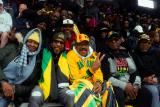


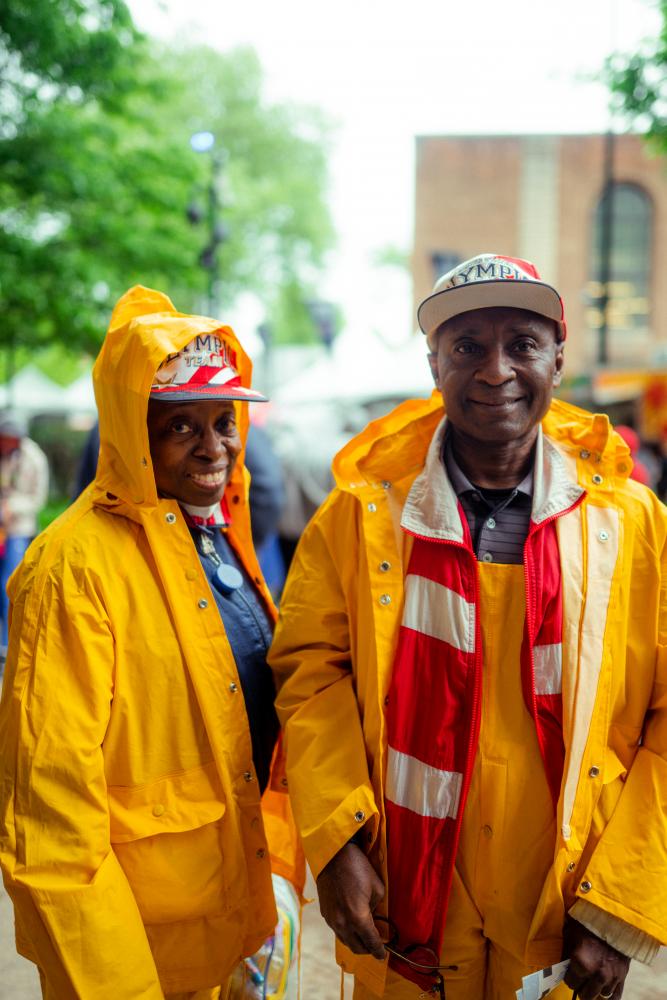
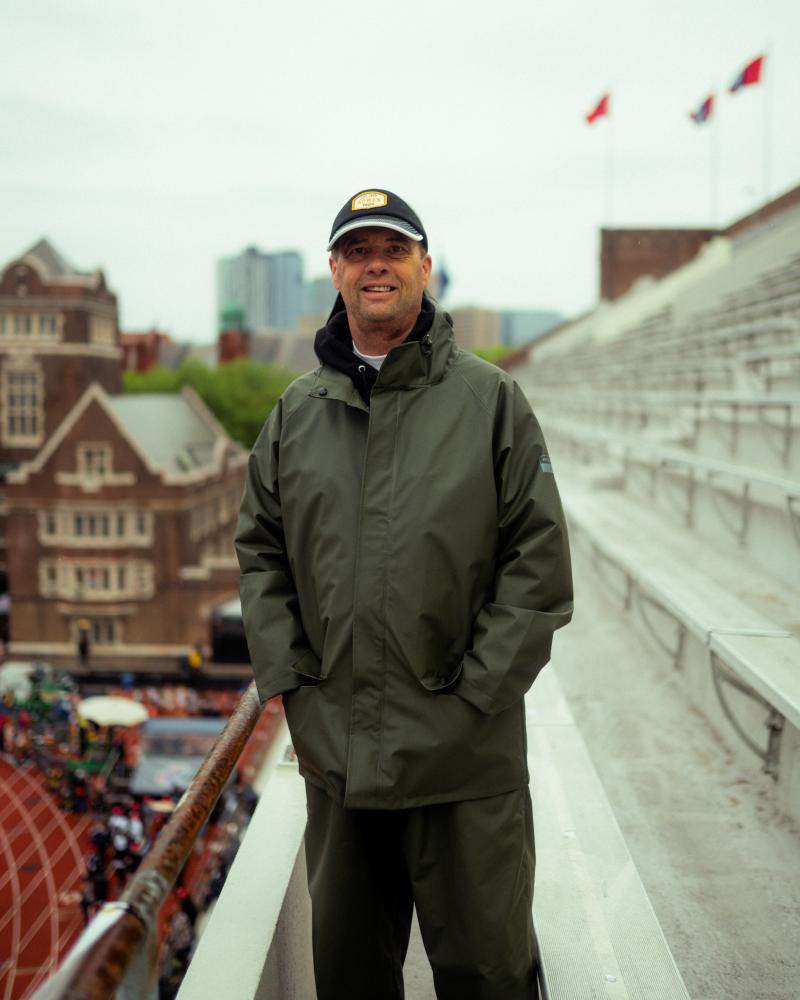
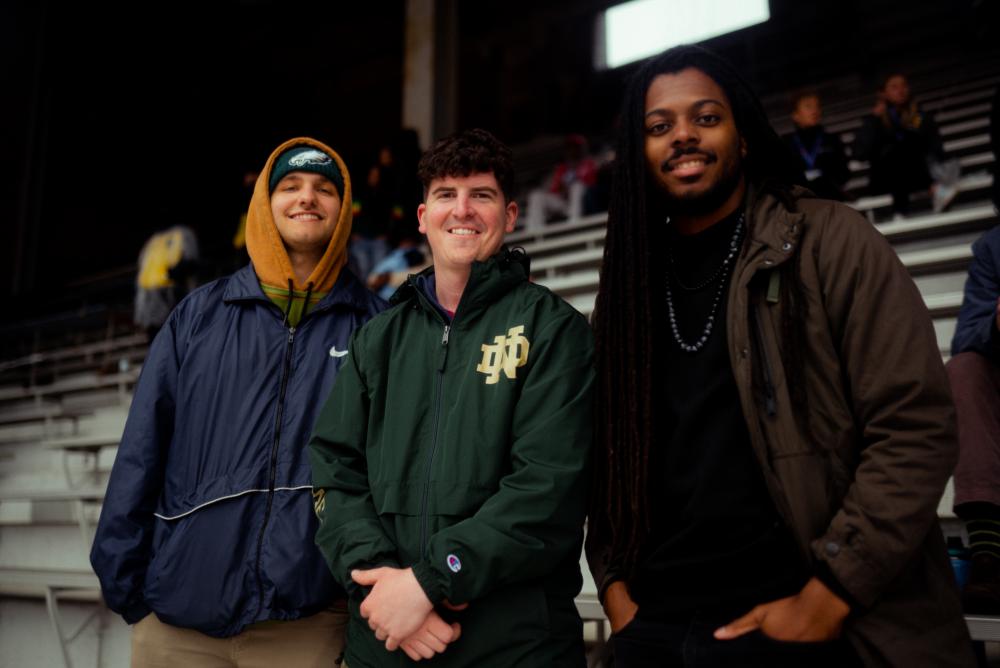 Corcoran wasn’t the only one skipping work for Penn — Dan Fisher, Giancarlo Santo and Joseph Jackson grew up in Philadelphia and scored free tickets to the meet from their corporate jobs in South Jersey.
Corcoran wasn’t the only one skipping work for Penn — Dan Fisher, Giancarlo Santo and Joseph Jackson grew up in Philadelphia and scored free tickets to the meet from their corporate jobs in South Jersey. 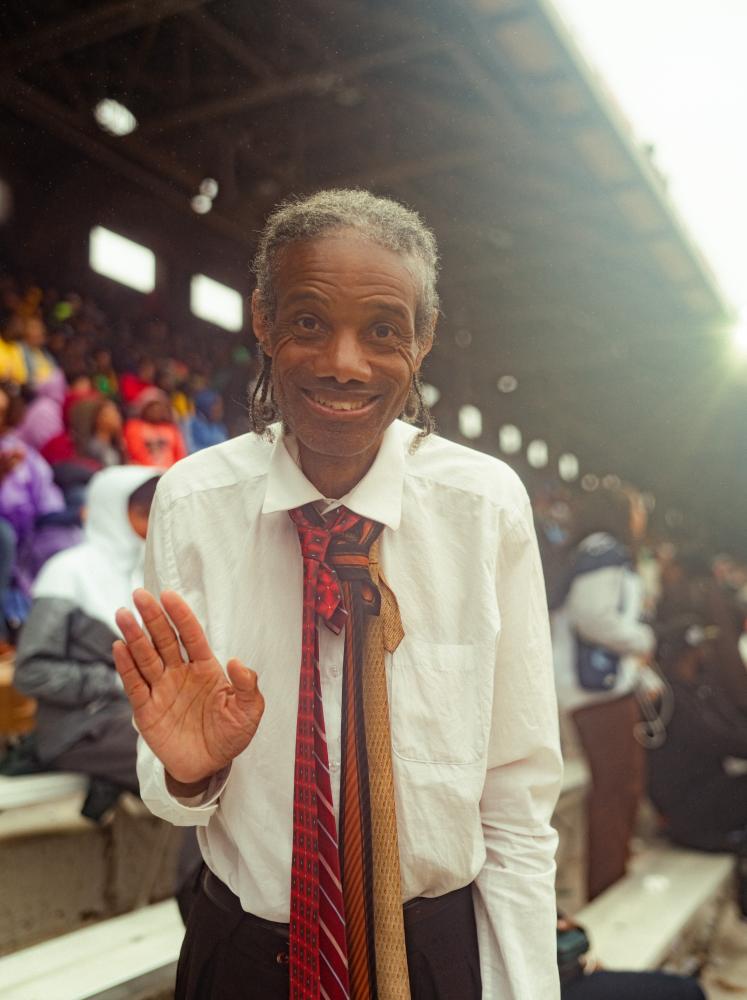 “It’s like the mecca of what a lot of these athletes go for,” Fisher said. “The Penn Relays is something important for people.”
“It’s like the mecca of what a lot of these athletes go for,” Fisher said. “The Penn Relays is something important for people.”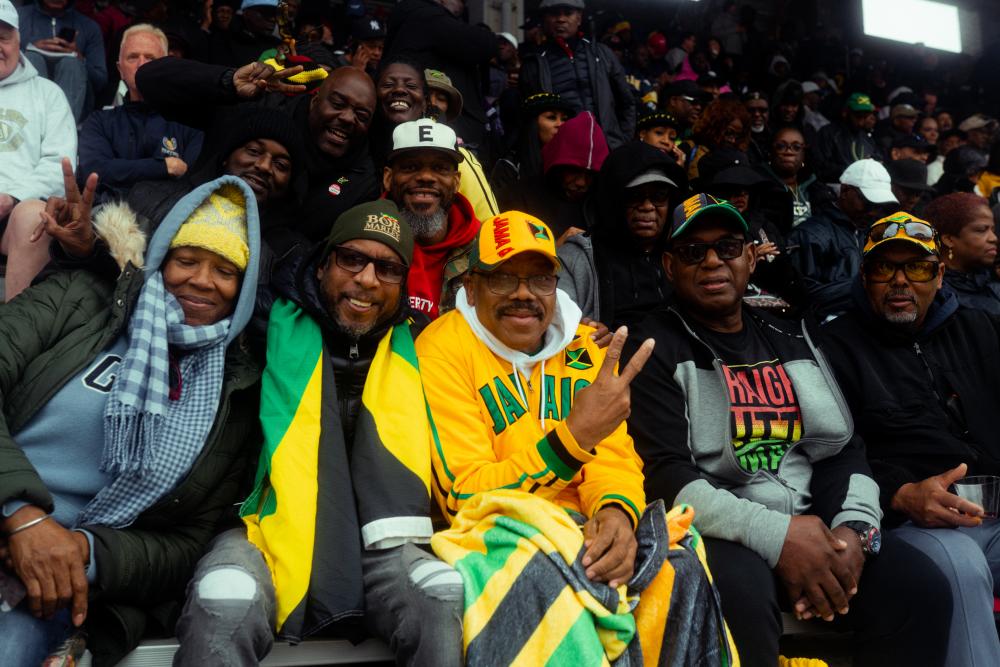
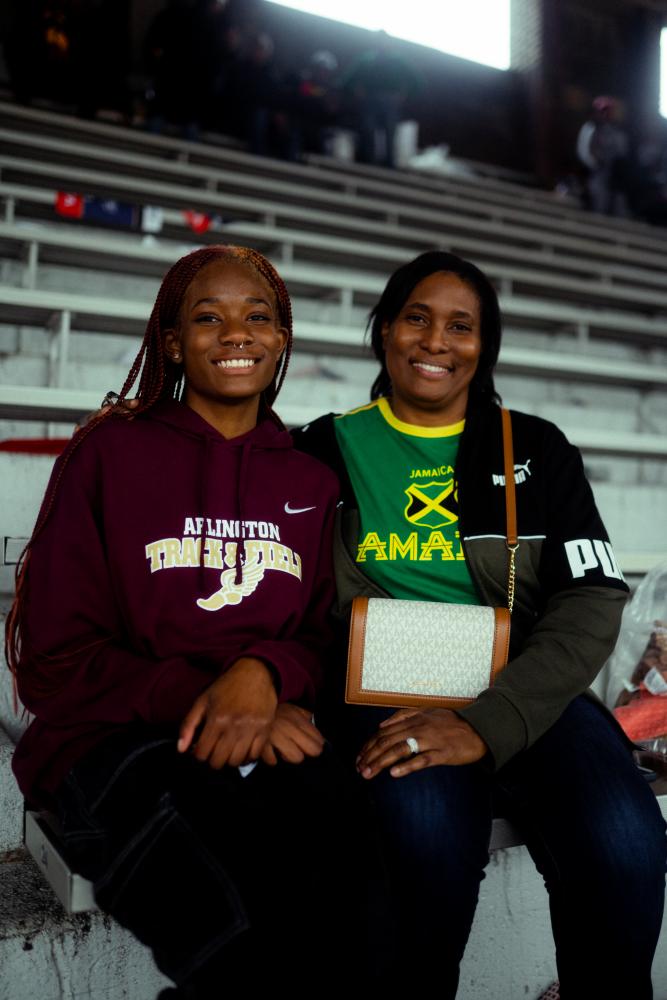 The Jamaican track and field fanbase is almost religious. Rain or shine, they’ll show up to watch the Penn Relays. It’s obvious to see when you look across the stadium to see endless pockets of green and yellow clothing.
The Jamaican track and field fanbase is almost religious. Rain or shine, they’ll show up to watch the Penn Relays. It’s obvious to see when you look across the stadium to see endless pockets of green and yellow clothing. 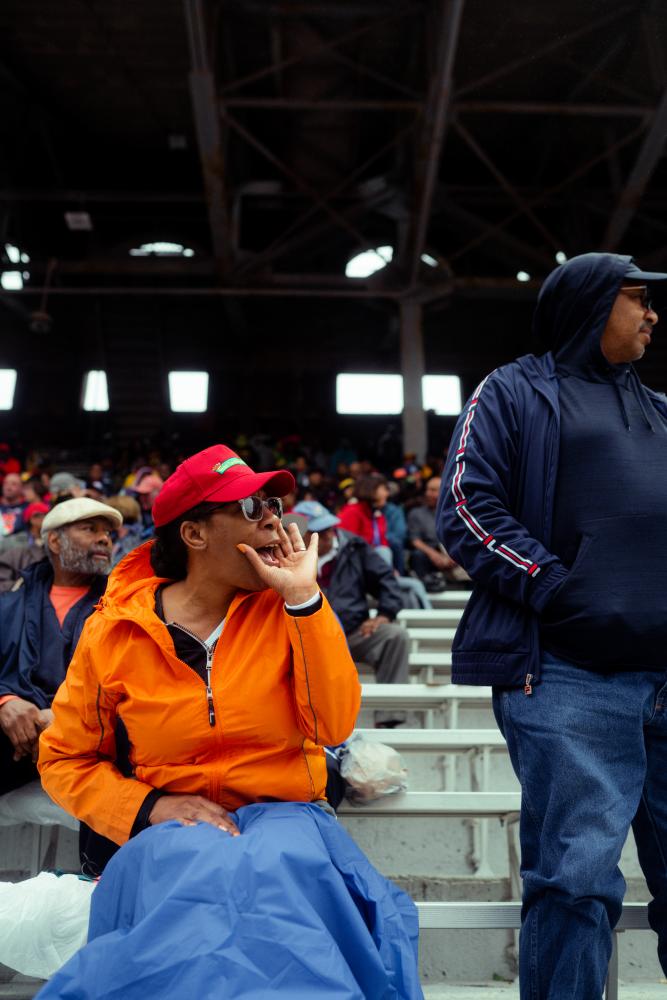 Monica Green and Terrence Hall and their son, Jordan, from Baltimore, like how the Relays try to cultivate a “U.S.-versus-the-world” narrative between schools from Caribbean countries and their American counterparts
Monica Green and Terrence Hall and their son, Jordan, from Baltimore, like how the Relays try to cultivate a “U.S.-versus-the-world” narrative between schools from Caribbean countries and their American counterparts